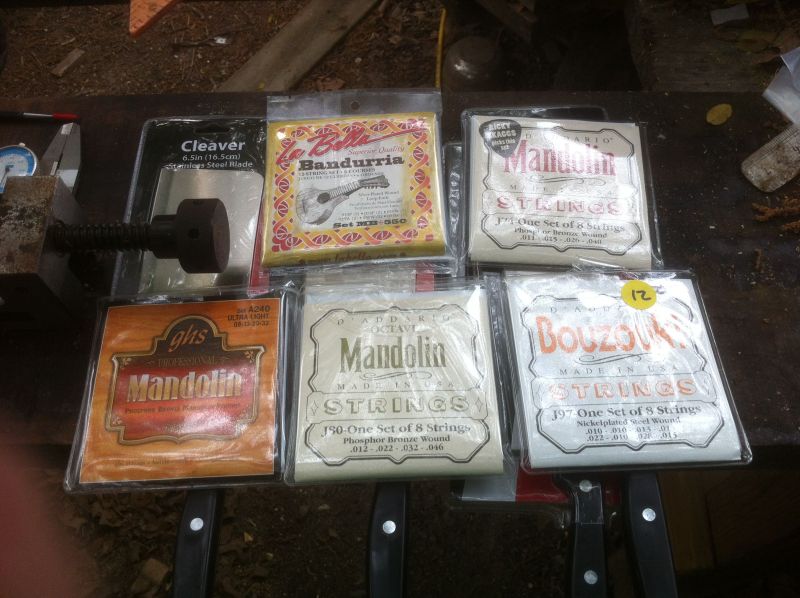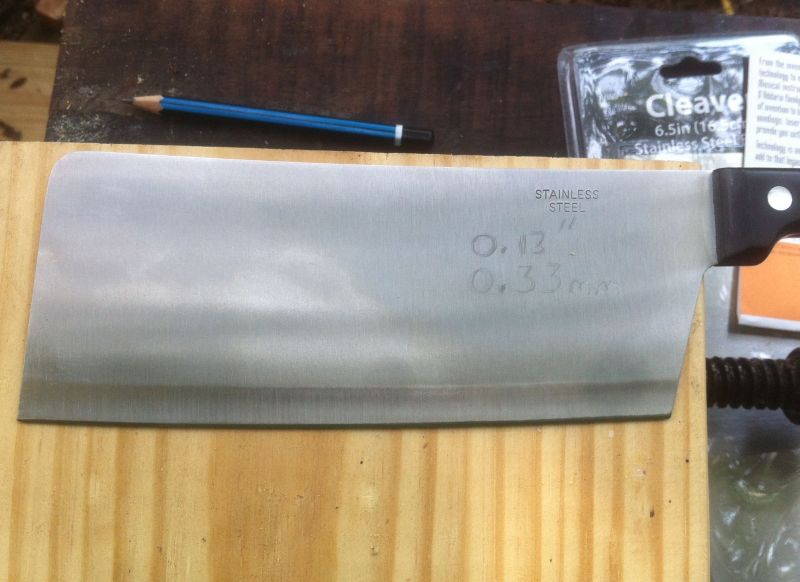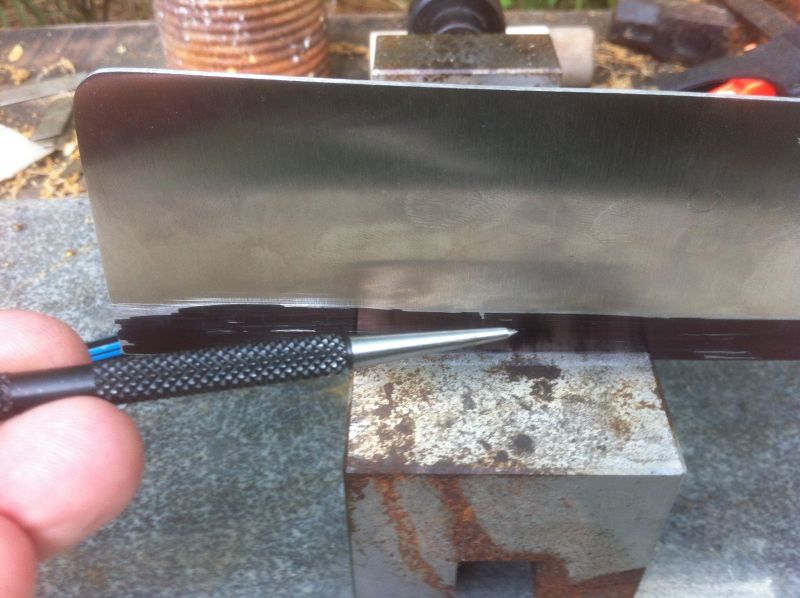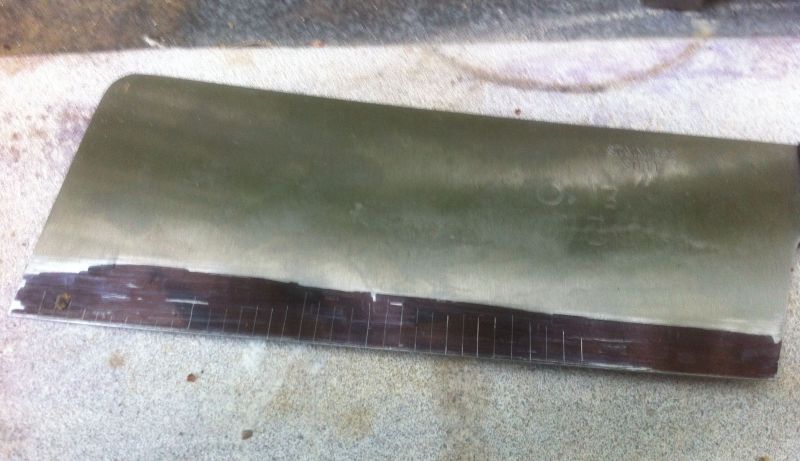The problem with making tools, is that eventually you have all the tools you really need. I have met this problem and figured out how to conquer it! Simply manufacture the need! In this case I have decided to make a mandolin.
This requires a bunch of new tools! Since I want to learn luthery, I have started out by doing repair, adjustment and fine tuning. Repairing a range of instruments means even more tools.
One such tool is for cutting or adjusting the notch in the nut to take a string. Ideally you want a perfect fit. Of course you could just buy a set of nut files, but since you need a nut file per string size this could mean four files for a basic mandolin. If you broaden you range, you can quickly find a need for quite a few nut files.
Here is a small collection of string sets;
Just to support one string set each for a modern mandolin, octave mandolin, bouzouki, antique mandolin and a bandurria requires quite a few unique string sizes. Even with some overlap, I still need 18 floats if I want to remain fairly precise.
Here is the vise I will use to make sure I have a precision gap. My scraper/scribe, dial calipers, and dollar store cleavers are also showing. I will need one cleaver per float, but at a dollar each the price is lower than the price of a nut file from any other source. I enjoy making tools, so the time spent is a wash. If I am making one float, it takes me about an hour unless I decide to put a new handle on it. 🙂 If I mass produce several at once, it takes me under 20 minutes per float.
The final result is not quite as fast as a fresh nut file, but it leaves a better finish, it is easy to clean out, it can be sharpened and best of all, this can have precision much better than a set of 12 nut files can provide. Additionally the wide blade makes it easier to sight down and make sure it is lined up to make straight cuts.
I am making this one the hard way, to illustrate the methods more clearly. Usually I would strip the handles of clamp them together with wet towels between them. I would wet them again and then Square the edge on a belt grinder, wetting regularly. Then I would wet them again and cut the notches with a cut off wheel all at the same time. By making the notches first, I reduce cleanup and finishing steps. After shaping and removing material to fix the profile, the notches are already cleaned up and pretty.
In the picture below the cleaver still has a curved edge. The curve needs to be ground away.
Here is a mandolin string being gripped by the vise with just enough force to give good resistance to pulling out the string, but not tight enough to deform the string or prevent the string from being removed.
As luck would have it, after squaring the edge, and cleaning up the taper, the blade fits perfectly. Sadly I am going to have to grind it down some just to show how the adjustment is done.
After grinding it, I use black magic to mark the blade. That’s right a black magic marker is a good way to make visible marks on a blade.
By putting the blade in the gap and using a scribe to mark, I can check to see if my grind is even and I can mark the material that needs to be removed.
I had to move the knife several times to mark the line. Since the line is straight my grinding job was straight as well. If you look below the knife you can see the granite slab with sandpaper on it. This is just one of the reasons the grinding job is straight.
In this picture you can see marks made to guide me in cutting notches. You can also see that I have ground down almost to the scribed line. After cutting the notches, I will grind to the line, round the edge and precision fit the blade to the gap in my vise.
Here are the preliminary notches made in the blade. They could be squared off a bit, but even rough they will do a great job. In the picture below the teeth look a bit uneven. For optimal performance the teeth are probably too even. I want an even enough gap so the teeth are strong and work out, but even teeth will not leave as fine a finish or cut as smoothly. This sounds a bit crazy, but the best rasps and floats are systematically random in their tooth placement.
By leaving a flat surface between the teeth, a much smoother stroke can be made. The tool is a bit less aggressive, but it is fast enough for my purposes. I sharpened the tip of this tool so that it can start with a clean straight line. Further back it will cut a more rounded notch.
As a comparison for speed of cut, if this were a file, I would consider it dull but not too dull to replace. The finish left is very clean. Another great advantage here is the ability to adjust the profile.
Bob










 A page Dedicated to My Writing
A page Dedicated to My Writing
Hi Bob,
I’m happy to read you are also into mandolins and you are tackling the lutherie as well 🙂
I read with great interest this article, and I really like the method you use for calibrating the width of the blade, but what a huge tool for making a simple job ?
and take care, you need a handy and mobile tool to go around this area, it’s so easy to ruin a finish with an unwanted slipping …
The usual way to do such tool is to hack a set of thickness gauges, so that you can have all kinds of thickness available.
You can see my set here :
http://www.labellenote.fr/photorama2.php?lng=en&pg=524 (9th photo)
It does the job if you do not need intensive work (witch is obviously the case for the amateur luthier as I am)
Important thing : the bottom of the cut must be round.
A chamfer on each side of the blade can be enough, provided you finish the job, for the widest strings, by passing an old string back and forth in the slot so that it gets smooth and perfectly round.
See you on homemadetools !
Christophe
I do love your F5! Apart from doing repairs my stringed instrument work consists of a few tests of theory. I am just starting, so you are way, way ahead of me on this!
Oddly, while doing my study of tool grips, I came onto an odd observation. Once you get past the psychological expectation of small tools for fine work, larger tools give you better control. As an example, within reason, if you hold a turning tool with two hands, the further apart the grip of your two hands is the finer a movement of the blade is made with the same movement of the back hand. A larger grip and tool can provide better precision.
Since the mind tends to think small for precision, I try to start large and then reduce my tool size as needed.
Bob
Hi Bob,
I agree for big tools, especially for gouges or chisels, it’s far better for strength and also precision as you say to control with both hands, and with a long shaft.
I know some luthiers working with the biggest japanese carpenter chisels (you know, the long long ones) for adjusting the neck joints for instance.
Obviously, the pivot is the cutting edge, and if you move the other end of the handle, 50 cms away from that pivot, for a few mm, you get a very high definition tool :).
But like always, the tool is nothing if you don’t have the skill, and training is always necessary …
Personally, I take the opportunity when making tools to train and diversify my skills, to be ready enough when I do “serious” works. (I hear you saying tools are serious) It does include finishing, which is always for me one of the biggest challenge for wood working, but especially for lutherie.
To come back to the nut tool, nevertheless, I keep thinking that here, the most important is not so much precision (yes you must take care of the depth) but carefulness, whenever you
work on a finished instrument, so approaching my mando with such a big cutting tool is enough to make me scared :o)
Believe me, when you will have spent hundreds++ of hours doing such a complicated thing as an F5, you don’t want to take the least risk, at the end …
Just one question, what is exactly a “float” in this case, forgive my bad English, but I didn’t find anything in relation with nuts in my English French dictionary ?
Thanks,
always a pleasure to read you
Christophe
A float is half scraper and half coarse file, half saw and 150% worth having.
They can be moderate to reasonably aggressive while leaving a smooth finish and high quality floats can be made by the end user.
Your nut saws are essentially side cut floats. The best description I have found is an article by Donald Kahn.
Lief shows how to make a classic set here.
Bob
Nice, understood, I knew these tools, but didn’t know the name.
Thanks !